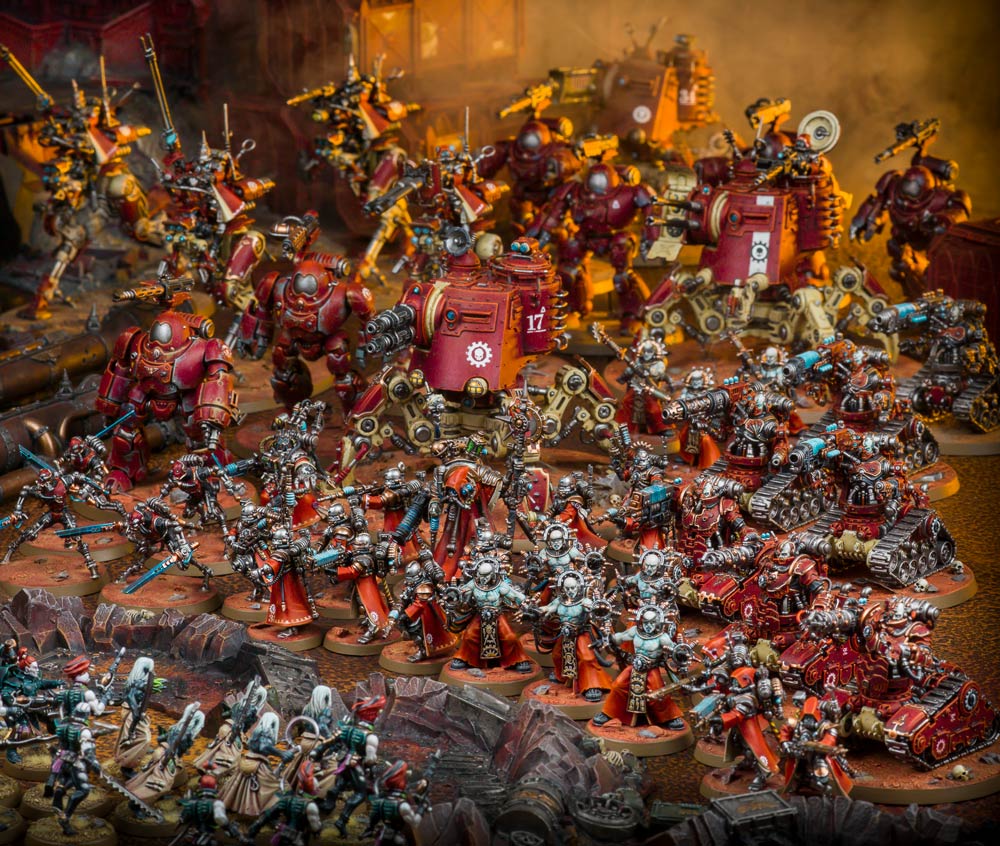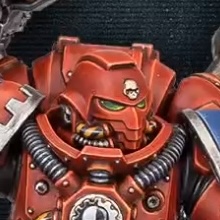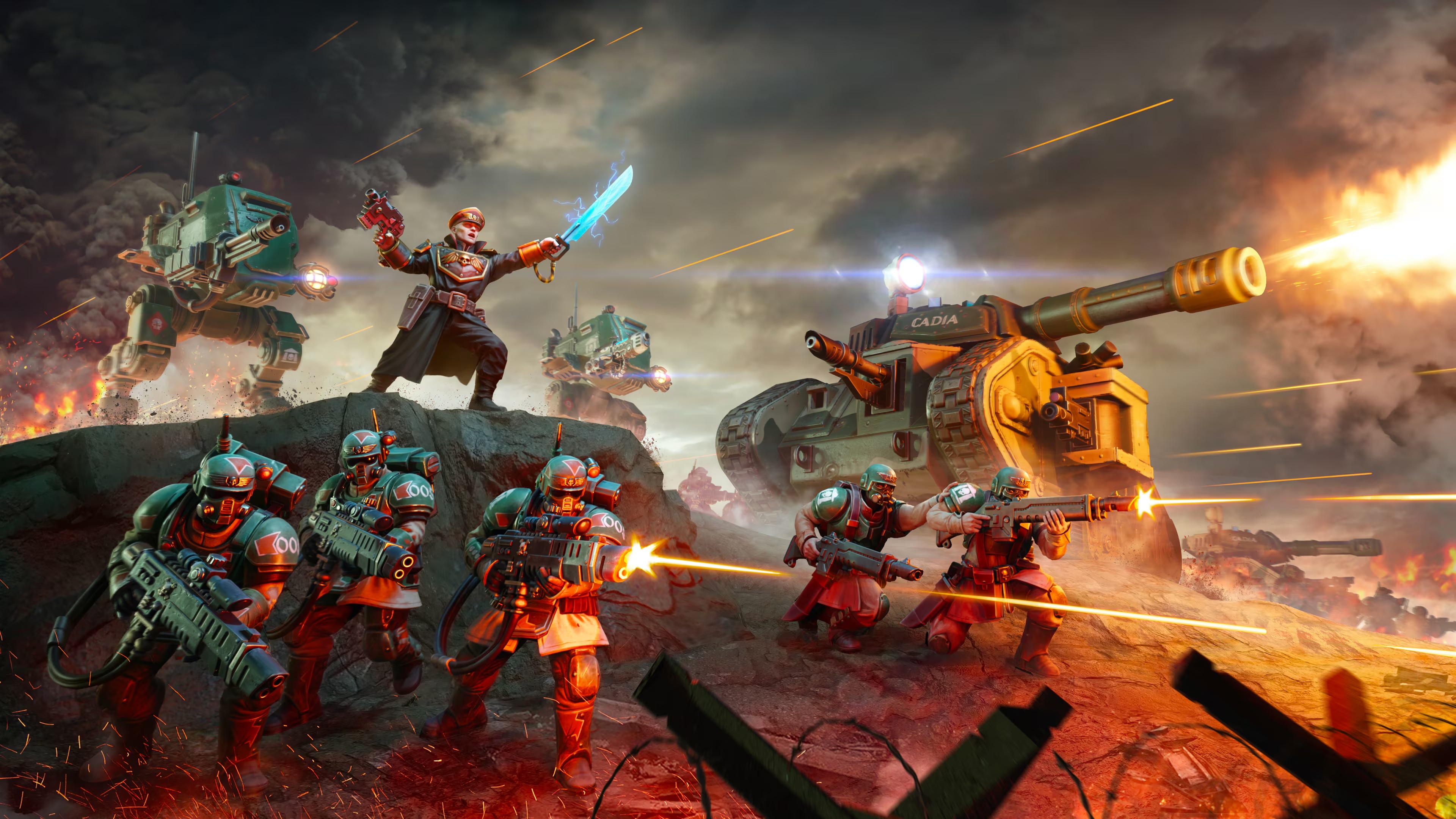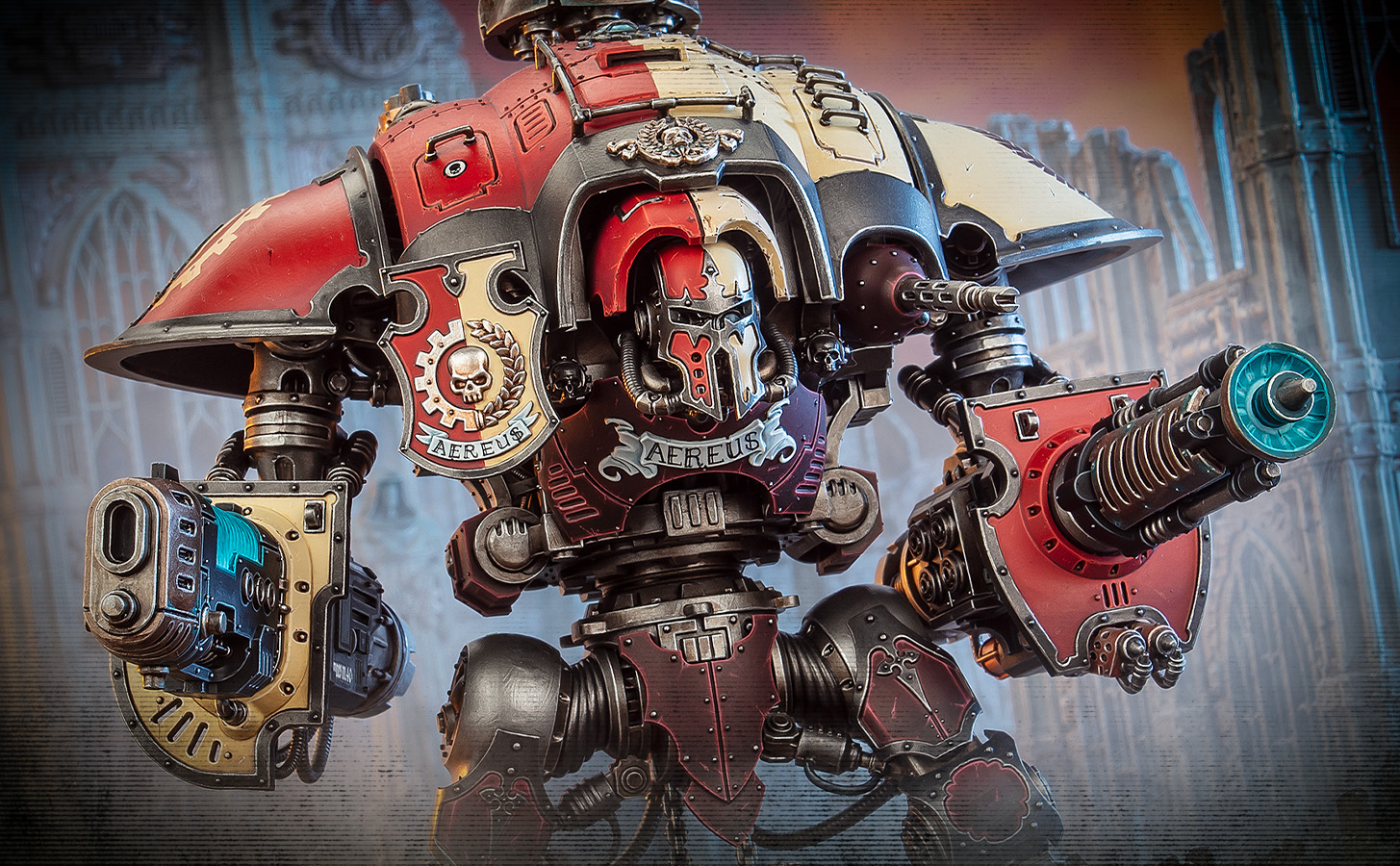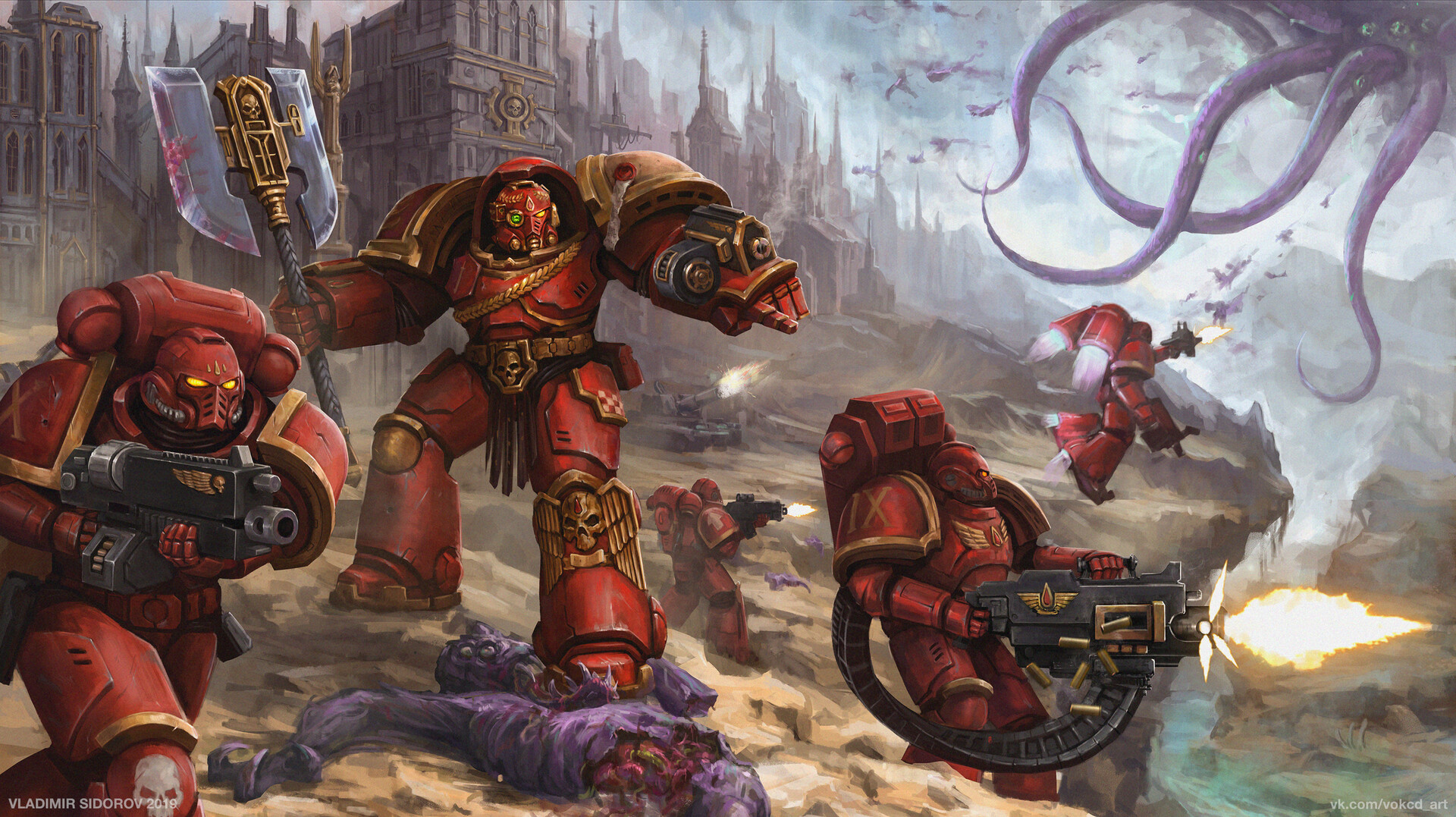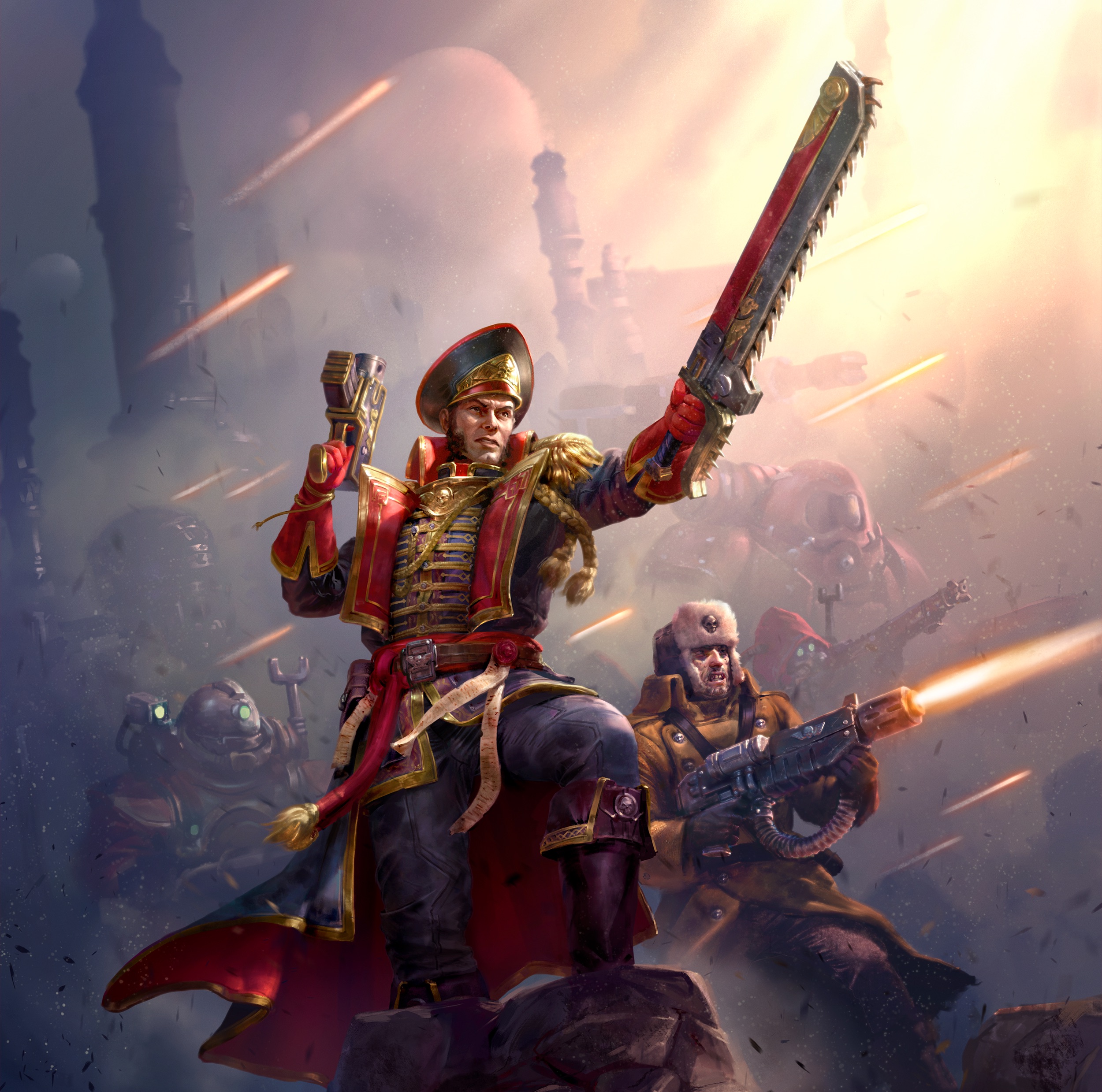The Adeptus Mechanicus, known as the Cult Mechanicus of Mars, stands apart from other Imperial institutions. It is a priesthood of machines and knowledge that predates the Imperium itself. Their influence spans from the earliest days of Humanity’s interstellar flight through the horrors of the Age of Strife, and into the relentless crusades of the 41st Millennium. To understand the Machine Cult is to journey through millennia of invention and catastrophe – from Mars’ rise as a forge-world, the sacred quest for lost knowledge, to the towering god-engines and cybernetic legions that march in the Omnissiah’s name. Below, we delve into their origins and history, the structure and hierarchy of their priesthood, the eternal quest for knowledge that drives them, the technological marvels and forbidden science under their purview, and the renowned forge worlds and figures that define their legend.
Origins and History: Mars and the Omnissiah’s Bargain
Long before the Imperium, Mars was colonized as a center of industry and scientific achievement. During the Age of Technology (M15-M25), it became Humanity’s primary forge-world, sending out countless colony fleets to spread its technological creed. This golden age ended abruptly with the Age of Strife (M25-M30), a galaxy-wide era of anarchy that isolated worlds and sparked rampant warpspawned storms. Mars suffered terribly: its atmospheric shields failed, cosmic radiation scorched the terraformed biosphere, and billions perished. Scavengers and mutant warlords vied for survival amidst the ruins. In this crucible of desperation, Mars’ survivors found new faith in the Cult Mechanicus, worshipping the Machine God. Tech-priests rallied the populace to build radiation shelters, reclaim ancient machines, and preserve knowledge at all costs. Through fanatical devotion and self-sacrifice, order was restored under the Mechanicus creed, and Mars was reborn as the fabled Forge World of the Machine God.
Unified under the Cult Mechanicus, Mars began dispatching Explorator fleets across the stars, seeking out lost human colonies and technologies. Even Terra (Earth) was not spared their expeditions – Martian tech-priests clashed with Terra’s Techno-barbarians over hoarded relics. This rivalry only ceased with the arrival of the Emperor of Mankind during the Great Crusade (early M30). The Emperor was seen by many Martian priests as the prophesied Omnissiah, the Machine God’s avatar, for his miraculous technological prowess. In 800.M30, Mars forged a momentous alliance with Terra in the Treaty of Mars (called the Treaty of Olympus Mons by the Mechanicum). By this pact, the Mechanicum was formally incorporated into the newborn Imperium as the Adeptus Mechanicus, yet guaranteed unprecedented autonomy and protection of its traditions. The Emperor pledged to respect Mechanicus sovereignty over all forge worlds and granted Navigator gene-lines to replenish their Warp-traveling crews. In return, Mars would provide the Imperium with unmatched arsenals – constructing starships, weapons, and armor to fuel the Great Crusade. This symbiosis of throne and forge was crucial: Martian shipyards (the Ring of Iron) built the vast expeditionary fleets that carried the Emperor’s armies across the galaxy.
However, not all on Mars welcomed this union. Tech-priests like Kelbor-Hal, the Fabricator-General of Mars, distrusted the Emperor’s motives. During the ensuing Horus Heresy (M31), these tensions exploded. Warmaster Horus lured Kelbor-Hal and many Mechanicum forces to his side with promises of complete Standard Template Construct (STC) databases and unfettered research. Mars itself was split by civil war – the Schism of Mars – as loyalist tech-priests led by Fabricator Locum Kane battled Kelbor-Hal’s traitors. The traitor faction, thereafter known as the Dark Mechanicum, seized Mars but was isolated by Imperial blockade. Ultimately, the Heresy ended in Horus’s defeat, but Mars bore lasting scars. In the Heresy’s wake, the Imperium reorganized Mars’s status: the Adeptus Mechanicus as an Imperial Adepta was solidified, led by a Fabricator-General who henceforth held a permanent seat among the High Lords of Terra. For the next 10,000 years, the Mechanicus has toiled to keep the Imperium’s technology alive. Their Quest for Knowledge – the recovery of all lost science and tech from before the Age of Strife – became nothing less than a holy mission.
Structure and Hierarchy of the Machine Cult
The Adeptus Mechanicus is often called the Priesthood of Mars, and its internal hierarchy reflects a blend of religious fervor and technical specialization. At the pinnacle is the Fabricator-General of Mars, effectively the high priest of the Machine God and the executive of all Forge Worlds. This position is so influential that the Fabricator-General is counted as one of the High Lords ruling the Imperium. Each major Forge World (Mars and its offshoots) is governed by its own Fabricator-General or an Archmagos of equivalent rank. These leaders preside over a ruling council of Magi – master Tech-Priests each devoted to particular disciplines of the Cult Mechanicus (for example, Magos Alchemys for chemical sciences, Magos Biologis for genetics, Magos Technicus for engineering, etc.). Beneath them, ranks descend through Archmagi, Magos, and lesser Tech-priests, down to the lay brethren (Electro-priests, Transmechanics, Enginseers, and the like) who maintain and operate the countless machines of the Imperium.
A notable aspect of Mechanicus hierarchy is that status often corresponds to the degree of cybernetic augmentation and knowledge a member possesses – embodying the creed, “The flesh is weak, knowledge is all.” The most senior tech-priests eventually replace much of their organic form with bionics, becoming more machine than man in pursuit of communion with the Machine God. For example, an Archmagos like Belisarius Cawl stands as a multi-limbed amalgam of metal and flesh, venerable after centuries of self-modification. Sub-cults and specialist cadres exist as well, such as the Electro-Priests who channel the Motive Force (electrical energy) in battle, or the Myrmidons – techno-warriors obsessed with weaponry.
Importantly, the Mechanicus also fields its own military forces distinct from the Imperial Guard or Space Marines. The most famous of these are the Skitarrii Legions, also called the Tech-Guard – bionically enhanced soldiers whose lives are entirely devoted to the Machine God. Skitarii troops (like Rangers and Vanguard) defend forge worlds and accompany tech-priest Magi on expeditions. They are not considered part of the priesthood per se, but follow their own martial hierarchy. Each Forge World raises its Skitarii legions led by Skitarii Alphas and Primes, parallel to the priesthood chain of command. These soldiers have augmetic limbs, implanted targeting systems, and receive indoctrination that blurs the line between religious zeal and battle-drill. In battle they act as the Mechanicus’ shield and spear – for example, marching in lockstep behind their tech-priest masters, or garrisoning the massive forges against invaders.
Alongside the Skitarii, the Mechanicus commands other sub-branches: the Collegia Titanica (Titan Legions), the Ordo Reductor (siege engineers), the Legio Cybernetica (battle-automata and robots), and more. The Titan Legions, in particular, operate the towering god-engines known as Titans – the largest war machines of the Imperium. Though Titans and Knight suits are piloted by humans (Princeps or Noble pilots), they are maintained and revered by the Mechanicus. In this way, the Adeptus Mechanicus functions as a parallel empire within the Imperium: it has its own strata of leaders, its own armies, and even its own faith – all centered on the worship of the Machine God (the Omnissiah). Only their ancient pact with the Emperor keeps them aligned with Imperial goals rather than drifting into a separate destiny.
The Quest for Knowledge: Holy Mission of the Tech-Priests
At the heart of Mechanicus culture is the Quest for Knowledge – a millennia-long endeavor to recover the lost scientific and technological wisdom of Humanity. The Cult Mechanicus teaches that knowledge is the supreme manifestation of divinity, and thus every piece of technology or scientific insight is sacred. The Tech-priests believe that during the Dark Age of Technology (mankind’s ancient golden age), virtually all knowledge had been discovered and encoded into universal patterns like the STC system. The turmoil of the Age of Strife, however, caused incalculable loss of this knowledge. Therefore, the Quest for Knowledge is essentially a religious crusade to rediscover and restore what was lost.
One major focus of this quest is the hunt for Standard Template Constructs (STCs) – ancient computer templates capable of fabricating advanced machines. No fully functional STC has ever been recovered, but even fragmentary STC print-outs or data files are treated as holy scripture by the Mechanicus. Wars have been fought over mere shards of STC data. For example, Horus’s promise of an intact STC database was a key factor that swayed Fabricator-General Kelbor-Hal to heresy. An Explorator fleet discovering a new STC pattern can expect great rewards and elevation in status. In one case, fragments of STC data for mundane items (like an auto-quill or a new kind of bolt round) were considered priceless finds. Tech-priests called Magos Explorator devote their lives to this search, crisscrossing the galaxy, braving deadly ruins and alien worlds to unearth technology lost since the Age of Strife.
Yet, the Mechanicus’ view on innovation is paradoxical. They revere innovation in the sense of recovering ancient truth, but abhor unapproved invention as heresy. To orthodox Mechanicus doctrine, the “pure and perfect” designs already existed in STCs; attempting to create new designs is seen as presumptuous or even blasphemous. As a result, technological progress in the Imperium is extremely stagnant – tech-priests prefer to repair or recreate old designs rather than invent from scratch. When tech-priests do introduce a new technology, they often frame it as a “rediscovery” of some STC or precedent, so as not to appear as innovation. This dogma stems partly from ancient cautionary tales: the Men of Iron (ancient AI machines) who nearly destroyed humanity, and the many horrors unleashed by unchecked experimentation in ages past. Innovation vs. Dogma is therefore a constant tension within the Cult. Some radical tech-priests (labeled Hereteks) secretly pursue experimental research, such as dabbling in xenos technology or developing entirely new machines, but if discovered they face the gravest penalties. Officially, the Mechanicus creed holds that all knowledge exists and merely awaits discovery, so the proper path is to gather and safeguard lore until the complete truth (the sum of all knowledge, perhaps the Omnissiah’s true revelation) is achieved.
Despite this conservatism, the Adeptus Mechanicus has not remained entirely static. In times of great need, the priesthood has shown flexibility. Notably, Archmagos Belisarius Cawl spent 10,000 years on a secret project (sanctioned by Roboute Guilliman) to create the Primaris Space Marines – an “innovation” in Astartes technology that only debuted in the Indomitus Crusade of M42. Cawl’s work, though controversial, demonstrates that the Quest for Knowledge can lead to new inventions under the guise of recovered lore. The majority, however, continue to sift through archeotech vaults, explore forbidden zones, and study crumbling data-looms, all in devotion to the Machine God’s truth. The Mysteries of the Cult Mechanicus encapsulate this ethos: “Life is directed motion” and “The spirit of the machine is the soul of Man,” they intone, affirming that by understanding the machine, one understands the divine.
Technological Marvels and Forbidden Science
The Adeptus Mechanicus is responsible for almost every technological wonder (and horror) of the Imperium. Their forge worlds churn out the weapons, starships, and machines that make Imperial civilization possible. Over ten millennia, the Mechanicus has achieved feats ranging from planet-spanning manufactoria to miraculous devices – albeit often by standing on the shoulders of the ancients. Some of their greatest technological marvels include the Titan war-machines, the Knight combat walkers, widespread cybernetics, and various superweapons and innovations reserved only for the Omnissiah’s faithful.
Titan Legions – God-Machines of War: The Collegia Titanica oversees the Titans: colossal bipedal war-engines as tall as cathedrals. These include classes like the Warhound Scout Titan, Reaver Battle Titan, Warlord Titan, and the apocalyptic Imperator Titan. Each Titan is a walking fortress, bristling with weapons capable of leveling cities. Their Machine Spirits are so complex that only a princeps wired into a throne can control them, and entire clades of tech-priests and servitors attend to their machine needs. Titans are rightly called “god-engines” by the Mechanicus – in battle they inspire awe and terror in equal measure. During the Great Crusade and Horus Heresy, Titan Legions walked alongside the Space Marine Legions, often deciding battles by their mere presence. For example, the Titan Legion Legio Ignatum (Fire Wasps) and Legio Mortis were famed opponents during the civil war, their duels described as clashes of gods. Each Titan Legion has its own proud history and cult traditions, akin to knightly orders. Maintaining a single Titan is an epic task: the Mechanicus forges must produce rare alloys for their hulls, specialized reactor cores, and energy weapons of monstrous size. Only the Adeptus Mechanicus could supply and crew such engines, which is a key reason the Imperium can’t do without Mars. Titans symbolize the pinnacle of sanctioned Imperial technology – and the Collegia Titanica ensures their loyalty lies with the Omnissiah above all.
Knight Houses – Scions and their Walkers: Smaller than Titans but still towering over infantry are the Imperial Knights. Knights are one-man combat walkers often 3 to 4 times the height of a Space Marine Dreadnought. A Knight is piloted by a Noble from a Knight House, usually hereditary aristocracies from feudal worlds. These Knight Worlds were rediscovered during the Great Crusade, and the Mechanicum quickly allied with them, offering technical maintenance in exchange for oaths of service. Knights such as the Knight Paladin or Knight Errant are armed with oversized chainswords, thermal cannons, and battle cannons – capable of tearing through tanks and monstrous creatures with ease. They are described as “colossal war machines that tower over the battlefield”, able to stride through enemy lines and crush tanks underfoot. The Mechanicus keeps the Knight suits running, with each suit often bearing the sigils of the Cult Mechanicus alongside the house heraldry. Knight Households fight beside Titan Legions and Imperial armies, often fulfilling the role of shock cavalry or flank attackers. Culturally, the Knight pilots undergo a ritual called the Ritual of Becoming, interfacing their minds to their Knight’s Throne Mechanicum to control the giant machine as an extension of their body. This techno-arcane symbiosis between man and machine is something only the Mechanicus fully understands and facilitates, further deepening the Houses’ ancient debt to Mars.
Cybernetica and Servitors: The Mechanicus has also mastered cybernetics and robotics to an extent unmatched elsewhere in the Imperium. Servitors – mind-wiped cyborg laborers – are ubiquitous on forge worlds, performing labor too menial or dangerous for a tech-priest. These pitiful fusions of flesh and machine handle tasks from maintenance to heavy combat, guided by simple programming or direct control by a Tech-priest. Many servitors are former humans (even failed Space Marine aspirants) surgically refitted with mechanical limbs, tools, or weapons. They illustrate the extreme approach of the Mechanicus to utility: a human life means little compared to the utility it can provide as a servitor. More sophisticated are the creations of the Legio Cybernetica – true robots called Battle-Automata. These are fully mechanical constructs like the Castellan and Vorax automata, carrying heavy firepower. By ancient law, these robots have heavily constrained machine intelligences to avoid crossing into the forbidden territory of AI. Indeed, the Imperial Creed and Treaty of Mars prohibit true artificial intelligence, termed “Silica Animus” or Abominable Intelligence, ever since the Men of Iron betrayed humanity long ago. The Mechanicus remembers this Cybernetic Revolt in its legends: soulless AI and their Iron Men nearly exterminated mankind in the Dark Age, bringing on the Strife. Thus, all sanctioned Imperial machines must have either a human mind or a limited “machine spirit” at their core. The Men of Iron’s legacy is why every starship has a servitor-linked machine spirit and every Titan has a human princeps. Still, rumors persist of secret Mechanicus projects dabbling in AI or using xenos technology – these are the realm of the heretical Xenorelic hunters and the Dark Mechanicum.
Forbidden Science and Heresy: For all the sanctioned tech wonders the Mechanicus produces, there are dark byways of research that are condemned by their own doctrine. Some renegade tech-priests, driven by obsession, become Hereteks – conducting blasphemous experiments. These include melding Warp sorcery with machinery, creating proscribed weapons (like the Life-eater virus or rad-phages), or resurrecting technologies like cloning and gene-manipulation beyond allowed limits. The Mechanicus itself has internal factions like the Xenarites who advocate studying alien technology to improve their own – a highly taboo stance that led to the faction’s persecution. In M36, the Moirae Schism erupted over differing interpretations of machine-doctrine (some tied to new innovations), nearly splitting the Mechanicus. And on Forge World Stygies VIII, an entire cult of Magos fell to researching the Warp and became suspect, prompting intervention by the Ordo Xenos and Deathwatch (recorded as the Xenarite Schism). The most heinous heresies often tie back to the diabolic fusion of science and Chaos – what loyal tech-priests call “Techno-heresy”. The Dark Mechanicum, those tech-priests who serve Chaos since the Horus Heresy, embody this by building daemon-engines, binding Warp entities into machines, and reviving forbidden AI to use as weapons. Loyal tech-priests of the Adeptus Mechanicus hunt down such blasphemies relentlessly, even while officially denying that any tech-priest could stray (it is often the Inquisition or Adeptus Astartes who must confront rogue tech-covens).
In sum, the Adeptus Mechanicus treads a knife’s edge with technology: achieving miraculous feats and manufacturing the Imperium’s greatest war machines, but ever vigilant that those machines do not overstep the strictures of the Machine God’s law. Their credo “Knowledge is power, hide it well” illustrates that while they hoard lore greedily, they also fear its misuse.
Famous Forge Worlds and Figures of the Mechanicus
Throughout the galaxy, dozens of Forge Worlds carry the torch of Mars, each with their own specialties and legendary characters. Here we highlight a few:
• Mars – The original Forge World, also called the Red Planet, is the Mechanicus headquarters and holiest site. Its surface is a vast rust-red factory, blanketed in smoke and studded with towering forge-temples. Mars’ orbital Ring of Iron holds countless shipyards that produce the bulk of the Imperial Navy’s warships. Mars is ruled by the Fabricator-General of the Adeptus Mechanicus, currently Kane (after the Heresy). Mars’ significance is such that every other forge world is essentially a colony or spiritual extension of the Martian creed. The planet’s mysteries include the Noctis Labyrinthus (rumored prison of a C’tan shard) and the fact that its moon Deimos was relocated to serve as a bastion for the Grey Knights. To the Mechanicus at large, Mars is the beacon of orthodoxy and the font of standard doctrine – “the Forge World Principal” from which all others take example.
• Ryza – A major Forge World renowned for its mastery of plasma technology. Often called the “Furnace of Shackled Stars,” Ryza (Segmentum Ultima) was second only to Mars in output before being ravaged by constant war. Ryza’s tech-priests perfected plasma reactors and containment fields, supplying the Imperium with the finest plasma weaponry – the Leman Russ Executioner plasma tank and various plasma guns hail from Ryza’s STC patterns. This forge world held firm against traitors in the Heresy (notably the epic Defense of Ryza pitted loyalist Titans of Legio Crucius against Dark Mechanicum forces). In late M41, Ryza came under heavy Ork assault (Waaaghs of Waaaghboss Rarguts and others), turning its production toward its own defense. Tech-priests of Ryza, far from dismay, took this as a chance to battle-test their plasma arsenal in what they deemed a glorious trial by fire.
• Metalica – Known as “the Gleaming Giant,” Metalica is a Forge World in the Charadon Sector, Segmentum Ultima. It is entirely sheathed in metal; its crust is artificially constructed and the environment toxic, requiring its population to live in sealed habitats. Metalica is famed for relentless efficiency – its forges produce war materiel at a blistering rate. It lies uncomfortably close to the Ork Empire of Charadon and has been on a permanent war footing, its armies constantly repelling xenos incursions. Metalica is home to the Titan Legion Legio Metalica (the Iron Skulls), one of the oldest Titan Legions. Recently, Metalica was afflicted by a Chaos plague (“the Blight”) in the War Zone Charadon conflicts, which tested the resolve of its tech-priests. Still, Metalica’s dogma of the “Relentless March” means its skitarii and battle-automata advance and fire in perfect unison, breaking enemies with methodical volleys (a trait reflected even in the tabletop rules for the Metalica forge world).
• Graia – Titled the “Crown of Miracles,” Graia (in Segmentum Tempestus) is famed for its innovative spirit and its unusual orbital infrastructure. The tech-priests of Graia live not on the planet’s surface (largely given over to titanic manufactorum complexes) but in a ring of orbital stations encircling the globe in geometrical perfection. This ring – the Graian Crown – can even detach from orbit and make Warp jumps, effectively acting as a space-faring city. Graia is known for producing many Titan engines (it is home to Legio Astraman, the “Morning Stars” Titan Legion) and for a tenacious, conservative cult of tech-priests. In M41, Graia was the site of a massive Ork invasion led by Warboss Grimskull, as depicted in the Space Marine video game – the Orks sought to steal a Warlord Titan under construction. Though the Orks were defeated (with aid from Ultramarines and Imperial Guard), it was revealed Chaos forces orchestrated the attack to cover their attempt at a secret Warp device on Graia. Captain Titus of the Ultramarines foiled this, but Graia’s losses were severe. Nonetheless, true to their creed, the Graian tech-priests rebuilt their shattered forges with dogged resolve.
• Stygies VIII, Lucius, Agripinaa, Gryphonne IV – Other notable forge worlds each have unique reputations. Stygies VIII (in Ultima) is shadowed by suspicion due to its tech-priests’ penchant for xenotech (it harbors the secretive Xenarite sect). Lucius (forge of the Legio Astorum Titans) is known for its teleportation technology and gleaming brightness. Agripinaa, near the Eye of Terror, suffers constant Chaos raids and its priesthood is stern and punitive. Gryphonne IV was famed for its robust tank production and Knight Households until it was devoured by Tyranids in late M41. Each forge world often fields its own Titan Legion and Knight House attachments, reinforcing how intertwined the Mechanicus is with the grand Imperial war machine.
• Kelbor-Hal – The infamous Fabricator-General of Mars during the Horus Heresy, Kelbor-Hal is remembered as a cautionary figure. He renounced the Emperor’s authority and aligned Mars with Horus, providing the Warmaster with weapons and turning Mars into a Dark Mechanicum stronghold. It was Kelbor-Hal who opened the Vaults of Moravec on Mars, unleashing forbidden technologies, and who accepted Horus’ gift of stolen STC data from the Auretian Technocracy. After the Heresy, Kelbor-Hal’s followers either fled into the Eye of Terror or were executed; Kelbor-Hal himself is said to have ascended to become a demon-tained amalgam of metal, or possibly was destroyed – the sources conflict. His legacy was the permanent distrust sown between the Mechanicus and the idea of centralized Imperial control. The new Adeptus Mechanicus structure was in part created to prevent another Fabricator-General from ever wielding such unchecked independent power.
• Belisarius Cawl – Archmagos Dominus Belisarius Cawl is a legendary tech-priest of the current era (41st Millennium). Over 10,000 years old, he claims to have been tasked by Roboute Guilliman during the Heresy to work on a “long project” for the good of mankind. The fruits of that project were finally revealed in the Indomitus Crusade: Cawl unveiled the Primaris Space Marines – new, improved Astartes – and a wealth of advanced arms and armor to equip them. He was instrumental in resurrecting Guilliman in M41 (working with Eldar allies) and in closing the Great Rift’s effects on Terra. Cawl’s form is a spidery mass of mechadendrites and weapon-limbs, scuttling on many legs, a living repository of knowledge. Some in the Mechanicus revere him as a genius; others view him as a dangerous heretic for pushing the boundaries of innovation. Indeed, his “Cawl Inferior” device – a sort of personality copy of himself – and his experiments with Necron Blackstone to seal the Warp are deeply controversial. Still, few can deny that Cawl has likely recovered or recreated technologies thought lost (or invented entirely new ones). He embodies the duality of the Mechanicus: unfathomable knowledge and capability, yet walking on the edge of heresy to use them.
• Arkhan Land – A revered name from the Great Crusade era, Magos Arkhan Land was a techno-archaeologist who unearthed several crucial STC designs on Mars. He discovered the STC templates for the Land’s Raider (now simply Land Raider tank) and Land’s Speeder in the Librarius Omnis vaults. These powerful vehicles became mainstays of the Imperium – the Land Raider heavy tank in particular is one of the toughest armored vehicles of the Space Marines, its very name honoring Arkhan Land. He also recovered the “Land Crawler” STC, a versatile farming vehicle for agri-worlds. Arkhan Land’s exploits are legendary among tech-priests, symbolizing the glory of the Quest for Knowledge. It’s said he met his end seeking further secrets beneath Mars, dying as he lived – in pursuit of ancient wisdom. The fact that his name is immortalized in so many Imperial machines (Land Raider, Land Speeder, etc.) is a testament to his impact. Tech-priests invoke his name as a blessed ancestor in the Cult’s history.
Conclusion
The Adeptus Mechanicus stands as both the backbone and the hidden soul of the Imperium’s power. From the origins on radiation-scorched Mars where faith in the Machine God took root, through the alliance with the Emperor that bound Mars and Terra, to the current era where they toil to stem the dying of the light, the Mechanicus has never wavered in its core purpose. They forge the swords of the Imperium, keep its engines burning, and seek the enlightenment of all knowledge. Yet they are not mere engineers – they are mystics of iron and logic, treating every circuit as sacrament. In the 41st Millennium, as Warp storms tear the sky and xenos and heretics abound, the cry “Omnissiah preserve us” echoes from a thousand forge worlds. Clad in red robes, chanting binary prayers, the Tech-Priests of the Adeptus Mechanicus will answer – wielding the past’s wonders to secure humanity’s future, one sacred cog at a time.
